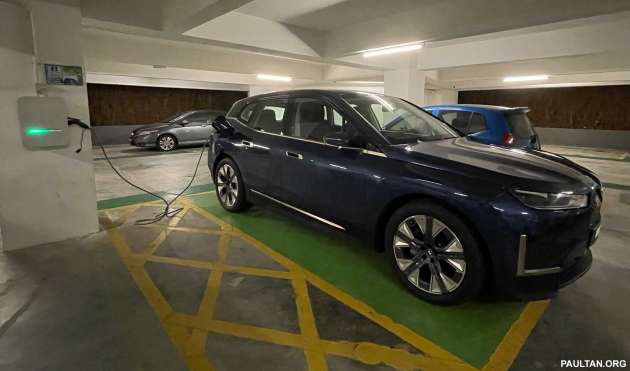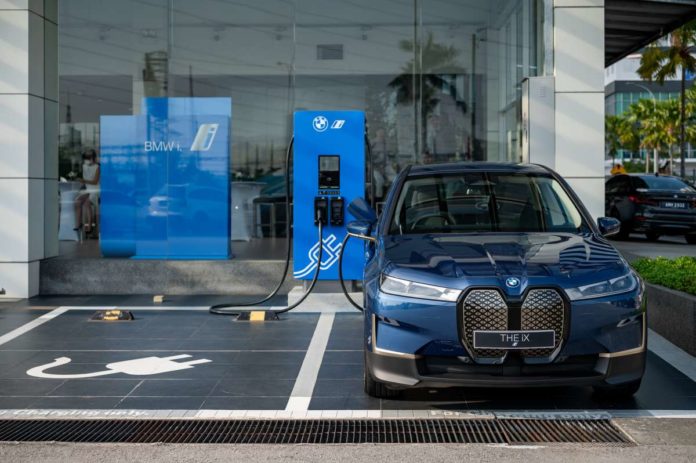Malaysia has certainly come a long way since the ABB 50 kW DC charger in Sunway was the only one around. We have a growing list of DC chargers now, though some may argue not nearly enough to support the increasing amount of EVs on the road thanks to the government’s EV tax incentives.
DC chargers are expensive equipment, so it would make sense that some operators have started charging for their service. After all, someone needs to pay for the equipment and electricity in order to fund further expansion. Even Tesla, famous for their initially free to use superchargers, have started charging for it.
Since charging is something new to everyone, there are some misconceptions or perhaps a bit of a case of sticker shock when it comes to finding out how paid DC chargers cost to use. This is to be expected as people are used to paying a fixed price per liter of fuel for their car wherever they are in Malaysia, and suddenly with charging there are so many variables to consider.
So we decided to write a story to hopefully clarify some things and provide a few tips so you can make the most out of your paid DC charging session.
The number one tip on how to save money when it comes to using a DC charger is not to use a DC charger in the first place. No, we don’t mean to sound like a boomer nagging about how kids these days spend all their money on ice blended coffee drinks. Because of the way we fuel our ICE cars with petrol, when someone unfamiliar with EVs hear how expensive it costs to refuel an EV with electrons, they automatically assume that is how much it costs to run the car daily.
In general, EV owners will charge at home overnight with an AC charger while they sleep. AC charging is slower than DC and it can take hours to recharge a car from a low battery percentage, but time is not really that important overnight because you are not using the car while you are sleeping, and most of the time you will only be topping up your charge instead of recharging from zero.


Based on residential electricity rates at the highest tier, you will be paying RM0.571 per kWh. This means a BMW iX with a 76.6 kWh battery will cost just RM43.74 to recharge from zero, and that will give you a WLTP range of 425 km (probably 350-400km in real life usage). So running your EV is not as expensive as you think it is based on the published DC charger pricing.
So when do you actually need to use a paid DC charger? There are a combination of two scenarios really – when you want to save time, and when you have no way to practically get back to your home charger.
A DC charger will be able to pump electrons into your car faster than the AC charger you have at home. The BMW iX can take in DC charging at a rate of as high as 150 kW, which is significantly faster than it’s ability to take in AC charging of just 11 kW.
Now this is where it gets tricky, and where the charging curve in the title of this story comes in. A charger may be capable of providing 150 kW. And your car may be capable of receiving 150 kW. But this transaction of electrons won’t always be happening at 150 kW.
The first thing you need to do is look for your car’s charging curve. You can Google for it. Remember to look for the specific battery that you have in your EV because different battery sizes have different curves.

BMW iX 76.6 kWh battery charging curve

BMW iX 111.5 kWh battery charging curve
So here I have embedded the charging curves of two different BMW iX. The one on sale in Malaysia now is the xDrive40 which comes with the 76.6 kWh battery. You can see that the peak 150 kW charging rate can only be sustained from 0% up to around 20%, after of which the charging power keeps dropping. The charging curve provided by BMW only goes up to 80% after of which charging power drops significantly to below 50 kW.
Since the majority of DC charging in Malaysia are charged on a time basis, it makes sense to only use the charger for the time periods where your battery is able to be charged at a high rate. If you remain connected to the charger while the rate slows down, you are actually getting less kWh per minute, thus paying a higher price for the electricity. Based on your charging curve, you can decide at which point you feel you are comfortable paying for your electrons per kWh. We recommend disconnecting at around 80% or even earlier if you do not need the extra state of charge.
You can see that the iX with the bigger battery can be charged at a higher rate and can sustain this rate for a significantly longer time. This is why you need to find the charging curve specific to your battery because it is clearly different for each battery pack. So in this case, the owner of the iX with the bigger battery might have paid more for his EV, but he gets more bang for buck when charging at chargers with time-based billing.
Why does this happen? This is just how the science of batteries work. Even your iPhone can only sustain fast charging from a low battery percentage and it slows down as the battery fills up. Some people use the analogy of filling up seats in a hall to explain it. When the hall is empty, there are tons of empty seats, so it’s easy to just quickly go in and grab a seat. But as the hall fills up, it starts to get harder to spot an empty seat, so the rate at which the hall fills up starts to slow.

Of course, there is one more reason you might want to use a DC charger – if you don’t have an AC charger at home. This might apply to a lot of people as they might be living in a high rise property with a JMB that isn’t receptive to the idea of installing chargers at the parking area.
But that is a complicated issue to address and motorists in that situation with no solution in sight might want to hold off purchasing an EV for now.
We hope this clears up some questions about how much it costs to charge an EV in Malaysia. If you have any additional questions please drop a comment and we’ll try to answer.

